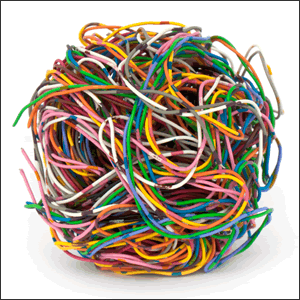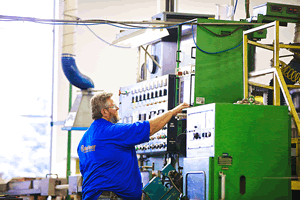Designing Next-Generation Anti-Counterfeit Technology Into Cable
Cable manufacturer Northwire deploys anti-counterfeit technology to protect customers against the flourishing counterfeit wire industry. Here are its tips on challenges and solutions for designing failsafes into your products.
 The next generation of anti-counterfeit verification tools safeguards consumers against hazards that can range from injury to revenue loss. The sophisticated multi-billion-dollar global “gray market” demands cooperative efforts between OEMs, distributors, resellers, consumers, watch-dog organizations, and government entities.
The next generation of anti-counterfeit verification tools safeguards consumers against hazards that can range from injury to revenue loss. The sophisticated multi-billion-dollar global “gray market” demands cooperative efforts between OEMs, distributors, resellers, consumers, watch-dog organizations, and government entities.
Counterfeiting can cause physical injuries, negatively impact revenue, and damage a carefully built reputation. Protection against counterfeiting starts with education, and that is precisely the foundation of Northwire’s collaborative efforts with customers. Warnings to consumers about inherent health and safety risks associated with imitation products are paramount in these efforts, as is the educational theme of risk avoidance, so consumers can identify knock-offs before purchase.

Take steps to ensure safety and quality by choosing verified cable suppliers.
The proactive approach employs a more aggressive strategy with a comprehensive series of anti-counterfeit offerings. Working closely with the R&D department, strategic supply chain partners, and product development engineers has resulted in a dynamic range of capabilities. From covert to overt, anti-counterfeit measures suit a wide variety of applications. Invisible to the human eye, authentication technology cannot be detected by a general physical examination. Depending on the customers’ preference, a covert capability developed by Northwire, for example, offers four distinct layers of detection options.
Meanwhile, overt examples of authentication range from less-sophisticated methods, like a custom legend with a product-specific UL-listed part registered to the OEM or customer, to more advanced authentication measures, including custom-designed overmolded printed circuit boards and smart chips that validate the OEM or customer. Essentially, this means a serial number that uniquely identifies the product and traces its supply chain path to the OEM.
To understand the importance of anti-counterfeit mechanisms, it is necessary to emphasize the counterfeit wire and cables’ countless risks.
The top 10 hazards of counterfeit cable, in order of ascending concern, are:
- Severe environmental and property damage
- Electrocution due to lack of standard safety mechanisms
- Risk of electrical fires, toxic smoke, and catastrophic combustion damage
- Liability, fines, and potential criminal prosecution
- Shorter cable life span
- Greatly reduced signal integrity
- Slow network systems speed with disproportionate downtime
- Poor reputation for your brand and products
- Loss of revenue, company certifications, or standing among competitors
- Loss of life due to electrocution, fires, smoke, and combustion
Stay vigilant and learn to identify counterfeit goods before you introduce them to your valuable supply chain. Always confirm the following when selecting a cable supplier:
- Is the manufacturer authorized to produce these cable types?
- Have you verified all trademarks, service marks, and copyrights?
- Is the price too good to be true?
- Can you request a Certificate of Conformance (C of C) from the OEM?
- Has the cable undergone full testing?
- Are material indicators solid?
- Can you sample before you buy?
[hr]
Information for this article was provided by Northwire Inc.







